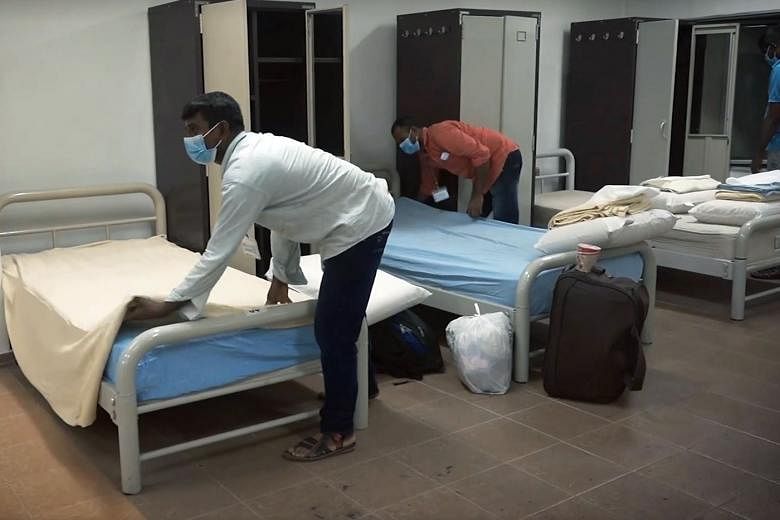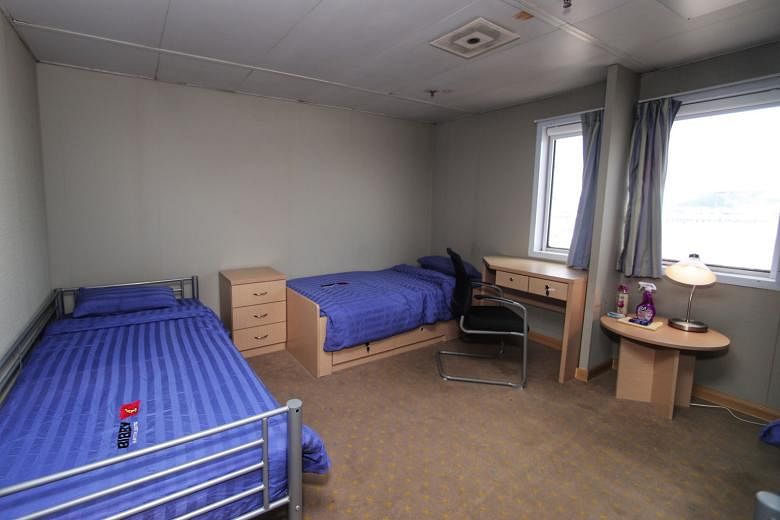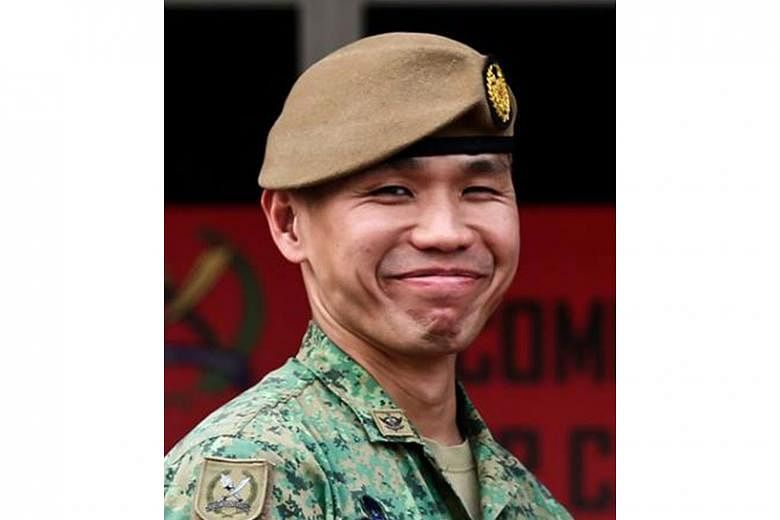Most of the foreign workers in essential services living in purpose-built dormitories - about 7,000 of them - have moved into 18 alternative living areas such as military camps, floating hotels, sports halls and vacant Housing Board blocks.
This move is to minimise disruption to essential services, alleviate the load on public health facilities and minimise the risk of these healthy workers getting infected, said an inter-agency task force handling the coronavirus outbreak in foreign worker dormitories.
More alternative accommodation is being prepared to house these workers if required, said the Ministry of Manpower (MOM) yesterday.
Permanent Secretary for Manpower Aubeck Kam noted that the task force has steadily stabilised the living conditions in purpose-built dormitories.
The next phase of operations, which is "very critical", involves putting in place medical support so that workers can receive good treatment, he said.
The task force plans to set up medical teams at all 43 purpose-built dormitories by next week.
This is up from the seven medical teams that are currently deployed at the eight dormitories that have been gazetted as isolation areas.
Giving an update on the task force's work since it was set up on April 7, Mr Kam said the forward assurance and support teams (Fast) were deployed to all 43 purpose-built dormitories to take care of the well-being, health and safety of the workers. "This is a huge undertaking, as we're talking about supporting the dorm operators to look after the needs of tens of thousands of residents," he noted.
He said meal timings have been improved, and feedback from the workers on the nature of the food served and their preferences have been taken on board.
Cleaning of the premises as well as clearance of rubbish have also been stepped up.
The Straits Times had earlier reported about unsanitary living conditions at the S11 Dormitory @ Punggol - one of the Covid-19 clusters.
Meanwhile, the MOM also has plans to move out essential workers who are living in factory-converted dormitories.
When asked yesterday, Manpower Minister Josephine Teo said her ministry did not have the number of essential workers in other types of housing on hand and would provide an update when ready.
The task force, which consists of about 750 people, is led by Brigadier-General Seet Uei Lim, Chief Guards Officer in the Singapore Armed Forces (SAF).
He said: "Now, our focus is on healthcare protection, and soon we will expand our healthcare capacity. The end state is to return to normalcy, ensure that dormitories can take care of our foreign friends."
He added that the task force will also "proactively case-find to break the chain of infection" and rope in medical workers from the polyclinics as well as general practitioners to beef up medical support.
The sizes of the medical teams deployed vary. For smaller dormitories, the team may comprise just one doctor and three nurses, while for bigger ones, two to three doctors and more nurses might be needed. They might also be supplemented with swab testing teams.

The Ministry of Health is leading efforts to provide medical support at the dormitories, assisted by the three regional health systems - SingHealth, National Healthcare Group, and the National University Health System.
The SAF Medical Corps is contributing to this effort, said BG Seet.
There are also several volunteers under the SG Healthcare Corps initiative, which calls for former and current healthcare professionals to be on standby.
Workers who are unwell are encouraged to see the doctor at their dormitories, so that they can be diagnosed and given appropriate treatment. Those who show respiratory symptoms will be separated early from the other residents.
The beefed-up medical coverage is meant to facilitate early identification, prompt contact tracing, and effective isolation of Covid-19 cases, said the MOM.
-
Types of accommodation
-
PURPOSE-BUILT DORMITORIES
There are 43 of such dormitories, which house about 200,000 foreign workers combined.
These bigger dorms can house 3,000 to 25,000 workers each.
They were designed for communal living, and have common recreational facilities such as television rooms and gyms, as well as minimarts and remittance services.
The dormitories are managed by professional operators that are regulated by the Ministry of Manpower.
FACTORY-CONVERTED DORMITORIES
There are about 1,200 of such dormitories, housing about 95,000 workers.
These tend to be smaller, with a capacity of 50 to 100 workers. Some can house up to 500 workers.
These dormitories are typically closer to workplaces.
Such dormitories may be operated by the employers themselves or by professional firms, and are also regulated.
ON-SITE HOUSING
There is also a smaller number of construction temporary quarters and temporary living quarters.
These generally do not house more than 40 workers each, and are regularly inspected.
Fifteen purpose-built dormitories have emerged as coronavirus clusters, with eight declared as isolation areas so far. This means workers have to be quarantined in their rooms for 14 days.
BG Seet said the task force has been working with the Infocomm Media Development Authority to ensure that the workers have Internet connectivity so that they can reach their family members overseas and also access entertainment.
Online shows in different languages are also being provided for their entertainment, as well as "care packs", which include reusable masks, hand sanitisers and thermometers, he said.





